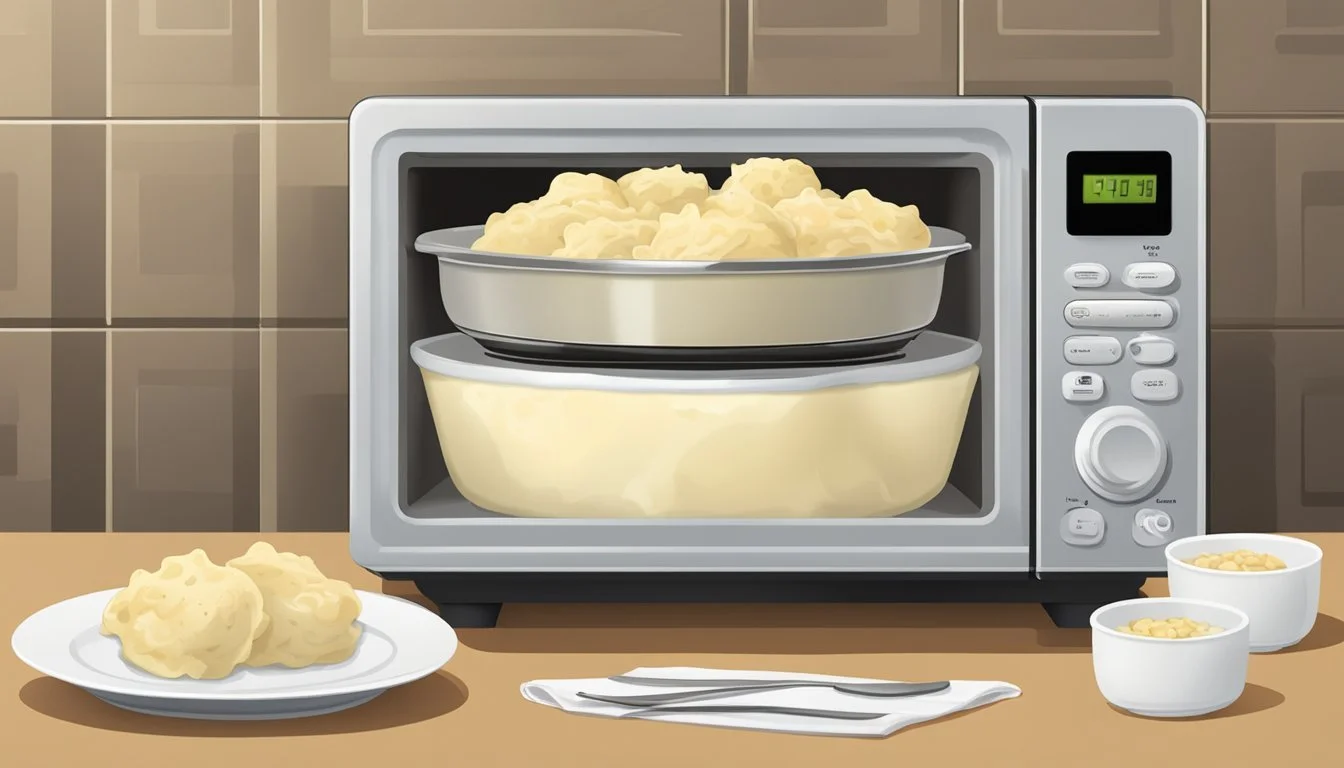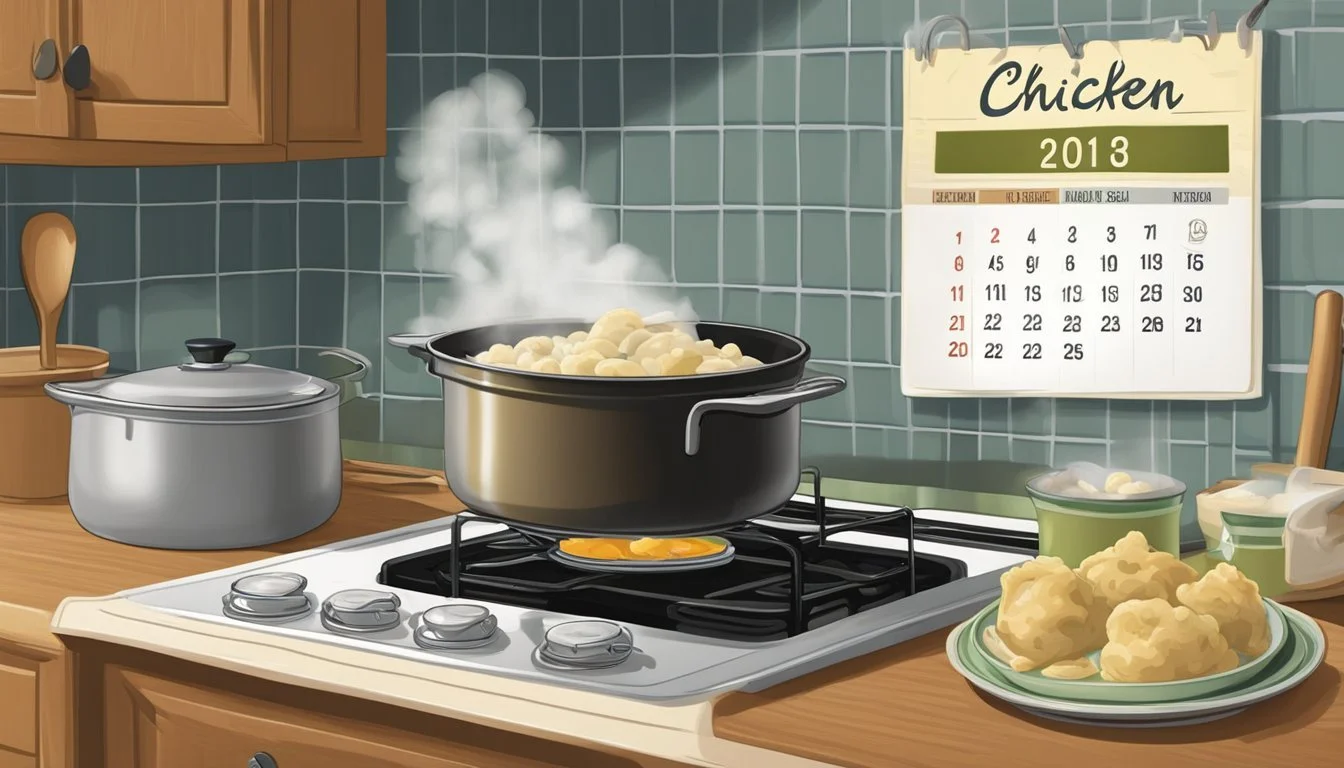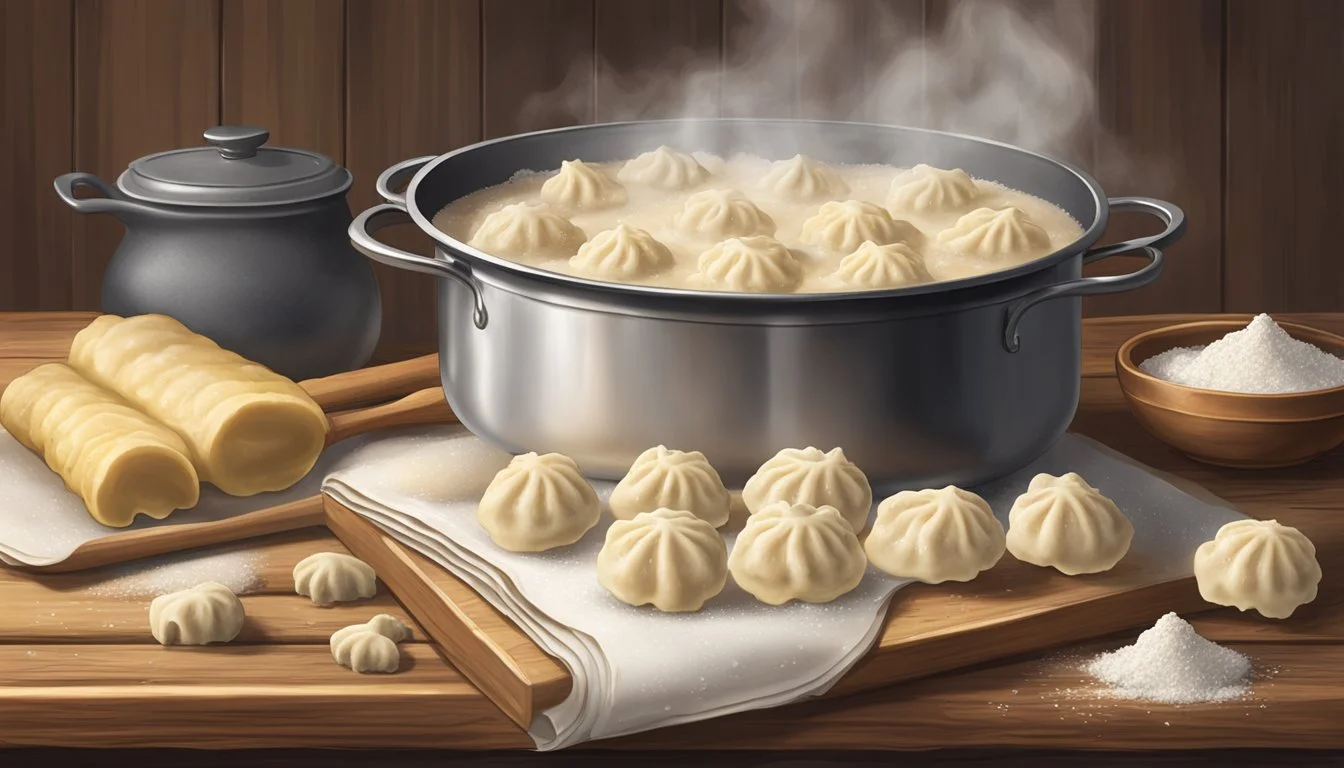How Long Do Chicken and Dumplings Last?
Shelf Life and Storage Tips
Who doesn’t crave a hearty serving of chicken and dumplings on a chilly day? This beloved comfort food combines tender chicken, fluffy dumplings, and savory broth, creating a dish that appeals to all ages. It's essential to know how long you can safely store this delicious meal. Chicken and dumplings can last for 3 to 4 days in the refrigerator when stored properly in an airtight container.
For those who like to make meals in bulk or enjoy leftovers, understanding how long chicken and dumplings can be frozen is crucial. Freezing can extend the lifespan of this dish significantly, making meal planning a breeze. Chicken and dumplings can be frozen for up to 2-3 months without a significant loss in quality, provided they are stored in freezer-safe containers or bags.
Paying attention to these storage guidelines ensures your chicken and dumplings remain safe and delicious. This not only minimizes waste but also maximizes your enjoyment of this classic dish.
Understanding Chicken and Dumplings
Chicken and dumplings, a classic comfort food dish, combines tender chicken pieces with savory dumplings and vegetables in a rich, creamy broth. Familiarity with its key ingredients, nutrition aspects, and varied recipes enriches its appreciation.
Key Ingredients in Chicken and Dumplings
Traditional chicken and dumplings consist of chicken, dumplings, and a selection of vegetables. Essential ingredients include chicken, typically shredded or chopped, and dumplings, made from flour, baking powder, and milk or cream.
Vegetables like onion, celery, and carrot add flavor. The base often includes butter and flour to create a roux, with chicken stock providing depth. Seasonings such as salt, pepper, and thyme enhance the taste. Garlic is also commonly used for additional flavor.
Dumplings can be made from scratch or from a mix like Bisquick. Fresh ingredients are preferred for the best taste and nutritional value.
Nutrition Overview
Chicken and dumplings offer a mix of protein, carbohydrates, and fats. The chicken provides a considerable amount of protein, essential for muscle repair and overall health. The dumplings, made primarily from flour, contribute carbohydrates, which serve as a primary energy source.
The addition of vegetables like celery, onion, and carrot not only enhances flavor but also adds fiber, vitamins, and minerals.
Using butter and cream in the recipe adds to the dish's fat content, which can increase the calorie count. Substituting full-fat cream with lower-fat options can reduce calorie intake without compromising too much on flavor.
Variations of Chicken and Dumplings Recipes
There are many variations of chicken and dumplings, catered to different tastes and dietary preferences. Traditional recipes often feature homemade dumplings and a creamy broth base.
Some prefer using Bisquick for a quicker dumpling mix. Vegetable variations can include peas or corn for added flavor and nutrition. Changes in seasonings can also offer diverse tastes – thyme, rosemary, and parsley are popular additions.
Regional variations may differ, with Southern versions focusing on thicker dumplings, while others might use noodle-like dumplings. Each variation maintains the foundational comfort elements but offers a unique twist on the classic dish.
Proper Storage Techniques
To maximize the freshness and safety of chicken and dumplings, follow these storage methods. They cover room temperature considerations, refrigerator storage, and the best ways to freeze leftovers for future use.
Storing at Room Temperature
Chicken and dumplings should not be kept at room temperature for long periods. Perishable foods like cooked chicken risk bacterial growth when left out for more than 2 hours.
Always cool leftovers quickly and transfer them to storage promptly. If the temperature is above 90°F (32°C), the safe window decreases to just 1 hour.
Refrigerator Storage
For refrigerator storage, use airtight containers to keep chicken and dumplings fresh for 3-4 days. Allow the food to cool down before placing it in the fridge to avoid raising the refrigerator's temperature.
Properly label containers with the date to ensure you're aware of how long it's been stored. To maintain optimal food safety, keep the fridge at or below 40°F (4°C).
Freezing Chicken and Dumplings
Chicken and dumplings can be frozen for 2-3 months. Use freezer-safe containers or freezer bags. Ensure the dish is completely cooled before freezing to prevent ice crystals from forming, which can affect texture.
Seal the containers tightly to prevent freezer burn. Label with the date of freezing for easy tracking. When ready to eat, thaw in the fridge overnight and reheat thoroughly to enjoy your meal.
Shelf Life Considerations
Cooked chicken and dumplings can last several days in the refrigerator, but various factors influence this duration. It's vital to keep an eye on freshness, signs of spoilage, and other elements affecting their shelf life.
Freshness and Expiration
Cooked chicken and dumplings generally stay safe for 3-4 days in the refrigerator at a temperature of 40°F (4°C) or lower. To maximize freshness, store them in airtight containers.
Storage Tips:
Use containers with tight lids.
Write the cooking and expiration dates on the container.
Keep the refrigerator temperature consistent.
By doing this, you help prevent bacterial contamination and ensure the dish's taste and texture remain intact.
Identifying When Chicken and Dumplings Have Gone Bad
Detecting spoilage is crucial to avoid foodborne illnesses. Signs that chicken and dumplings are no longer safe to eat include:
Visual Indicators:
Mold or discoloration on dumplings or chicken.
Cloudy or unusual sauces.
Smell and Texture:
Sour or off smells.
Slimy texture on chicken or dumplings.
Perform these checks regularly, especially towards the end of the 3-4 day period.
Factors That Affect Shelf Life
Several factors can shorten or extend the shelf life of chicken and dumplings.
Ingredients:
Presence of dairy or highly perishable leaves like spinach can impair longevity.
Fresh, high-quality components improve shelf life.
Storage Conditions:
Keeping the dish at a stable, low temperature slows down bacterial growth.
Air exposure: improperly sealed containers let in bacteria and air.
Handling Practices:
Use clean utensils when serving to prevent contamination.
Avoid repeated temperature changes, such as reheating and cooling.
Awareness of these factors aids in maintaining the safe consumption of chicken and dumplings, reducing the risk of foodborne illnesses.
Safe Reheating Practices
When it comes to reheating chicken and dumplings, ensuring food safety and retaining the dish's flavor and texture are essential. Various methods, like using a microwave, stovetop, or slow cooker, can be employed for this purpose, each with its own guidelines to follow for the best results.
Reheating in Microwave
To reheat chicken and dumplings in a microwave, start by placing a single serving in a microwave-safe container. Add a small amount of broth or water to maintain moisture. Cover the container loosely with a microwavable lid or plastic wrap. Heat the food on medium power for about 2-3 minutes.
Stir halfway through to ensure even heating. If the dumplings feel too hard, add a bit more broth and continue reheating in 30-second intervals until fully warmed. Ensure the internal temperature reaches at least 165°F (74°C) for safety. Avoid using high power to prevent the dish from drying out.
Stovetop Reheating Method
For the stovetop method, use a saucepan or a deep skillet. Gently place the chicken and dumplings in the pan. Include a splash of broth, water, or cream of chicken soup to keep the dish moist. Set the stove to low heat and cover the pan with its lid, leaving it slightly cracked to let steam escape.
Allow the dish to reach a gentle simmer. Stir occasionally to avoid sticking and to promote even warming. Simmer for about 10-15 minutes until the dish is heated through. Ensure the internal temperature hits 165°F (74°C) to guarantee safety. This method helps the flavors to meld nicely while ensuring the dish stays moist.
Using a Slow Cooker for Reheating
To reheat using a slow cooker, set the cooker to the "low" or "keep warm" setting. Place the chicken and dumplings in the slow cooker. Add extra broth or evaporated milk if necessary to maintain the entrée's moisture. Cover with the lid and let it warm for 1-2 hours.
This method is excellent for preserving the dish's original texture and flavors. Stir occasionally to prevent sticking and to distribute heat evenly. As always, make sure the internal temperature reaches 165°F (74°C) before serving.
Using these methods, leftover chicken and dumplings can be reheated safely while retaining the dish's delicious flavor and texture. Proper handling and adequate reheating ensure that every bit remains as tasty as the original.
Preventing Foodborne Diseases
Proper food handling and storage are vital to prevent foodborne diseases. Key areas of focus include understanding food safety, implementing best practices for handling leftovers, and minimizing contamination risks.
Understanding Food Safety
Food safety involves multiple practices to ensure that food remains safe to eat. Cooked chicken and dumplings, like all foods, must reach a safe internal temperature to kill harmful bacteria. For chicken, this is 165°F (74°C).
To prevent bacterial contamination, avoid cross-contamination by keeping raw and cooked foods separate. This includes using different cutting boards and utensils. Always wash your hands thoroughly before and after handling food.
Best Practices for Handling Leftovers
Leftovers can be a source of foodborne illness if not handled properly. Store leftover chicken and dumplings in the refrigerator within two hours of cooking. Use shallow containers for quicker cooling, which reduces the risk of harmful bacteria growth. Cooked chicken and dumplings should be consumed within three to four days when stored in the refrigerator.
When reheating leftovers, ensure that they reach an internal temperature of at least 165°F (74°C) to kill any surviving bacteria. Thawing frozen chicken and dumplings should be done in the refrigerator, never on the counter, to prevent bacteria growth.
Minimizing Contamination Risks
To minimize the risks of contamination, always use clean and sanitized equipment and surfaces. Regularly clean the refrigerator to prevent the spread of bacteria.
Be mindful of the storage times and temperatures indicated by food safety guidelines. Using airtight containers or freezer bags can help prevent bacterial contamination and freezer burn. Label and date leftovers to ensure they are consumed within safe time frames.
By following these practices, you reduce the risk of foodborne illnesses significantly and keep your meals safe to eat.
Final Tips and Tricks
When making chicken and dumplings, always season your broth well. Ingredients like bay leaves, parsley, and salt can significantly enhance flavor. A rotisserie chicken can be an easy and time-saving ingredient, providing well-seasoned meat without much effort.
A Dutch oven serves as excellent equipment for this dish, ensuring even heat distribution. For the dumpling dough, avoid overworking it. Mix until just combined, even if it looks slightly lumpy.
Incorporate heavy cream for richer dumplings and consider adding biscuits as an alternative to traditional dough for variety. Fresh veggies like celery and carrots not only add nutrition but also improve texture.
Leftover chicken and dumplings can be frozen for 2-3 months. Use freezer-safe containers to maintain quality. Reheat by transferring to a microwave-safe dish and heating on high for a few minutes, stirring occasionally.
Pair your dish with a side salad for a balanced meal. Adding frozen peas or a quick stir-fry of veggies can also complement the hearty dish well.
When handling hot utensils, use a wooden spoon which stays cooler than metal. For the best results, follow an easy chicken and dumplings recipe and adapt it to suit your tastes and available ingredients.







